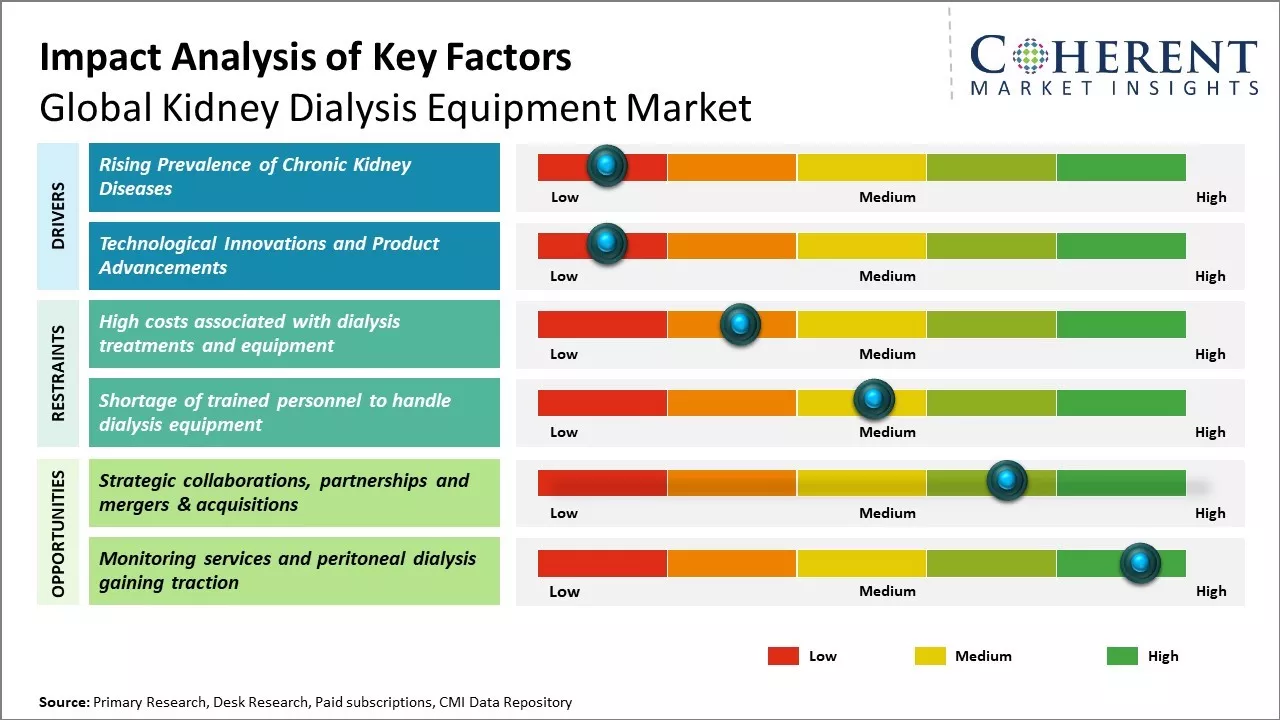Global kidney dialysis equipment market is estimated to be valued at USD 22.53 Bn in 2025 and is expected to reach USD 32.14 Bn by 2032, exhibiting a compound annual growth rate (CAGR) of 5% from 2025 to 2032. Rising prevalence of end-stage renal diseases across the globe can drive the market growth.

To learn more about this report, Request sample copy
Global kidney dialysis equipment market is expected to witness a steady growth over the forecast period, owing to increasing incidences of chronic kidney diseases. Factors such as growing geriatric population, rising cases of diabetes and hypertension, technological advancements in dialysis equipment and growing awareness about kidney disease treatment and management can boost adoption of kidney dialysis equipment. Furthermore, favorable reimbursement policies for dialysis procedures in developed nations and launch of innovative products by market players can drive the market growth over the forecast period.
Rising Prevalence of Chronic Kidney Diseases
Global kidney dialysis equipment market growth is driven by rising prevalence of chronic kidney diseases across the globe. Kidney diseases have become one of the major causes of mortality and poses a huge burden on healthcare systems worldwide. Various chronic conditions like diabetes, hypertension, glomerulonephritis contribute to rising incidence of kidney failure. According to the data published by WHO, chronic kidney diseases affected around 1.2 million people globally in 2020 and the number is estimated to increase substantially in the near future. Rising geriatric population also increases incidence of chronic kidney diseases with age being a significant risk factor. Moreover, growing prevalence of an unhealthy lifestyle characterized by poor diet, lack of physical exercise, rising stress levels and increased consumption of alcohol and tobacco products has further aggravated the risk of kidney ailments. Increase in risk factors is anticipated to trigger higher cases of end-stage renal disease (ESRD) that warrants renal replacement therapies like kidney dialysis, kidney transplantation for survival. Improving access to diagnosis and availability of dialysis services in developing regions enables more patients to receive life-saving renal replacement treatments. Rising cases of chronic kidney diseases and ESRD patients depending on dialysis procedures have significantly boosted demand for kidney dialysis equipment. For instance, in October 2021, according to a study published by Frontiers in Public Health, urinary tract infections (UTIs) led to approximately 7 million outpatient visits, 1 million emergency outpatient visits, and 100,000 hospitalizations annually among the elderly, comprising about 25% of all infectious diseases in this age group. In April 2022, according to a study published by Kidney International Supplements, chronic kidney disease affects over 10% of the global population, totaling more than 800 million individuals.
Joining thousands of companies around the world committed to making the Excellent Business Solutions.
View All Our Clients